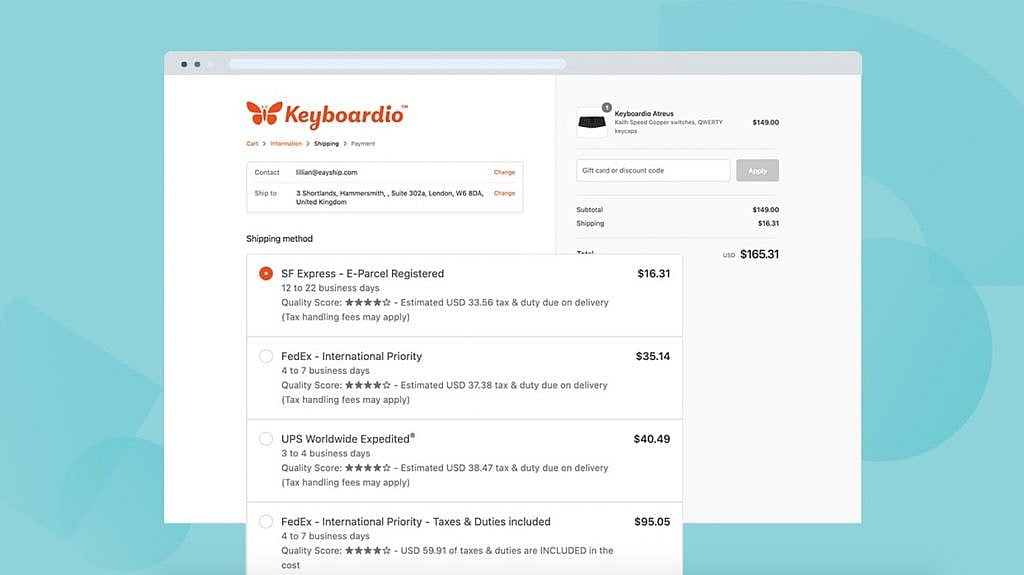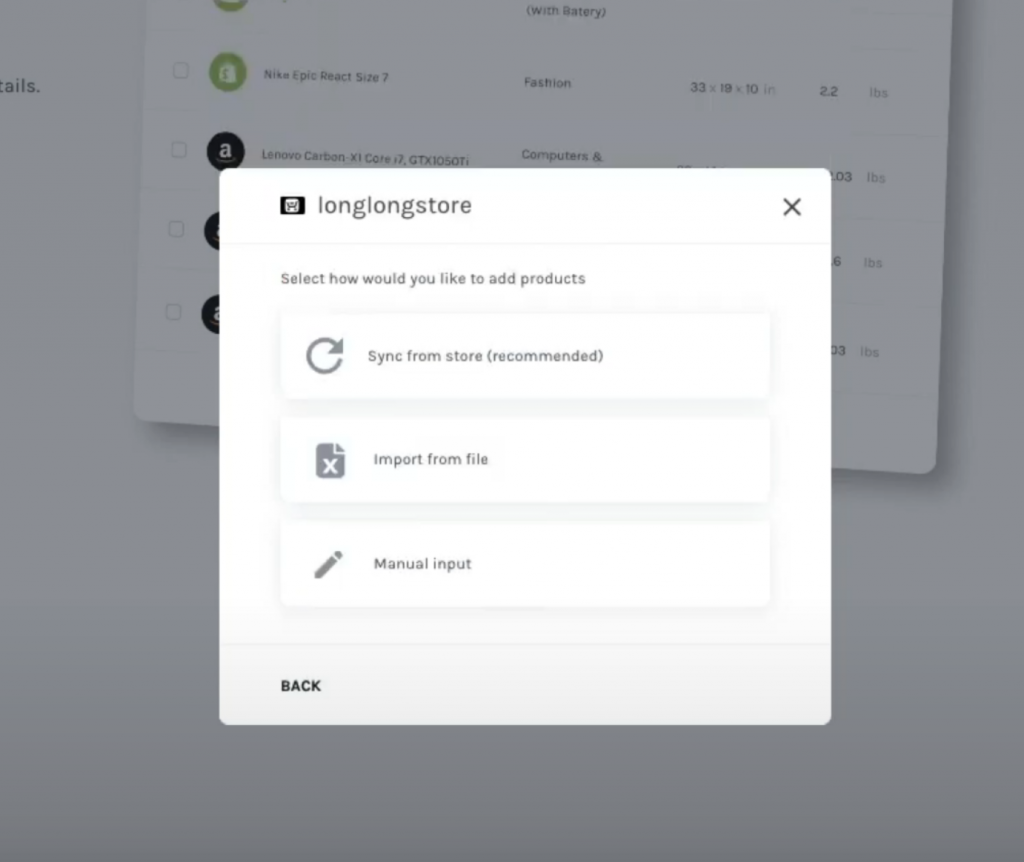Shipping software is a vital tool for online businesses. Anyone who sells products online needs an extra hand (or two, or three) to fulfill orders fast and affordably.
Shipping software integrates with a businesses’ eCommerce platform to automate many of the shipping and delivery processes. These platforms also help web stores better compare shipping rates, access discounted rates, and optimize their customer experience for greater sales.
As eCommerce continues to overtake physical retail, shipping software is increasingly popular with businesses of every size – from Etsy sellers to crowdfunders to enterprise merchants.
Web design professionals should learn how shipping software works, and why it’s so important to online businesses. Adding shipping software to your next web store project will make your finished project all the more appealing.
Here’s why every eCommerce store should use shipping software.
What Is Shipping Software?
Table of Contents
Shipping software is an online app that automates the processes of shipping and fulfillment for a business. Think of this platform as a go-between for an online merchant, their shipping services, and the customer.
Enabled by shipping APIs, shipping tools integrate with top eCommerce platforms like Shopify and BigCommerce, as well as crowdfunding sites like Kickstarter and Indiegogo. Once integrated, users can manage all shipping and order activity from a single dashboard.
From here, merchants can compare and access accurate shipping rates from all global shipping courier websites in real-time, including USPS, FedEx, UPS, DHL, and more. Shipping platforms also partner with couriers to offer pre-negotiated discount rates, helping merchants save on every shipment.
Web store orders automatically sync with the shipping platform to expedite shipping and fulfillment. Users can create rule-based shipping preferences to automate the courier service used for their orders, based on key shipping factors such as package weight, destination, delivery speed, and more.
Shipping software allows merchants to:
The best shipping software provides a suite of features that drive greater sales, automate operations, and streamline the customer experience. These capabilities are doubly critical for businesses engaged in global or omnichannel eCommerce. Coordinating shipments with multiple warehouses, third-party logistics providers (3PLs), and overseas couriers is too complicated without the visibility and interoperability of a shipping platform.
The mix of cost visibility for savings, shipping automation for efficiency, plus comprehensive shipping management makes a shipping tool a must-have for any serious online merchant.
Shipping Software Saves Time
Success can be a curse for online merchants: too many orders to fill, too little time. Busy merchants use shipping software to simplify every step of fulfillment. Here are a couple of examples of where a shipping platform lets a merchant do more with less.
Rate Sourcing
Without shipping software, merchants find the cheapest shipping rates by comparing rates on different courier websites. This is tedious work.
Moreover, each item in inventory may need a different shipping service (or courier), or the merchant risks overpaying for shipping. The merchant must then open an account with the chosen courier(s). Before they can save money on “business rate” shipping, the merchant must reach a minimum threshold of monthly shipments. Not exactly user-friendly.
With shipping software, merchants can view and select from all available shipping rates in their shipping dashboard. Meanwhile, rule-based shipping preferences allow users to automate their default shipping services by product, order value, destination, and more.
With Easyship, for example, merchants can also access enterprise-level rate-savings from 250+ global shipping solutions from day 1 without any minimums. Savings on time and money, unlocked.
Fulfillment
Fulfillment is the process of preparing an order for delivery. Each order received is picked from inventory, packaged, and sent off. The shipping label is printed, applied, then transferred to the courier. The shipment information must also be shared with the customer. Repeat this back-and-forth for 100s of daily orders and you’re losing heaps of time.
With shipping software, all customers’ orders automatically appear as shipments. Shipping labels are batch printed instead of piecemeal. All shipping notifications are automated. And since inventory updates automatically, your client never tried to sell a product they don’t have in stock.
Part inventory management, part hands-free shipping liaison – shipping platforms allow merchants to be efficient with order fulfillment.
Shipping Software Drives Sales
Thanks to Amazon, modern shoppers demand faster and cheaper delivery every day. If shoppers don’t get the cheap and fast shipping they expect, 75% say they will bounce.
To win sales, online retailers must present customers with fast and affordable delivery options. Again, if rates don’t appear instantaneously, customers bounce. Rates must also be priced accurately per the item weight and delivery destination. Enabling real-time rates without the cart optimization plugins in shipping software is basically impossible.
Shipping automation helps merchants optimize their checkout flow in three ways:
- Integrate rules-based courier options at checkout
- Set thresholds for free shipping
- Add insurance for valuable parcels
- Offer flat rates by destination
- Provide multiple accurate shipping options in checkout to drive sales
With Rates at Checkout from Easyship, merchants can provide three shipping options in checkout automatically. Tailored and accurate rates appeal to price-conscious shoppers, helping merchants to clinch sales and curb cart abandonment at once. It’s a win-win.


The best shipping software includes a set of features to help merchants enhance the customer experience, including:
- Worldwide tracking
- Dedicated tracking pages
- Branded post-purchase email marketing, landing pages, and packing slips
Shoppers today expect a streamlined purchase and delivery experience, plus fast and affordable delivery. In short, they expect a lot from brands. The features in shipping software enable the dynamic shopping experiences that merchants need to win over choosy shoppers.
Shipping Tools Run On Third-Party Integrations
Merchants use a variety of channels and platforms to reach customers. This includes eCommerce platforms like Shopify and BigCommerce, crowdfunding platforms like Kickstarter and Indiegogo, and marketplaces like Etsy and eBay. For omnichannel merchants, a shipping tool is the only way to effectively orchestrate fulfillment across all these disparate channels.
Shipping integrations run on open APIs, allowing merchants to access features that differentiate their store experience, drive sales, and streamline everyday processes.
To integrate a shipping platform with a web store, you just download the shipping software app. Next, sync the store account with the shipping platform. Once the orders appear as shipments in the shipping software, everything is connected.


Once integrated, your merchant can use an array of enhanced eCommerce shipping features, including:
- Shipping rates: Give web stores instant access to real-time courier rates in checkout (and discounts from the shipping platform).
- Shipping automation: Put shipping processes on autopilot with full interoperability between the merchant store, courier sites, and customers.
- Label generation: Allow businesses to automatically print shipping labels, customs documents, etc.
- Live Tracking: Enable customers to track shipments in real-time with links that draw dates from courier sites.
- Duty and tax visibility: Let businesses show accurate duty and tax information to international buyers in the shopping cart.
- Optimize operations: Automate shipping with Shipping Rules by setting default couriers for shipments based on the delivery destination, product type, and other shipping factors.
These powerful features are a recent innovation in shipping, says Jackie Ostrov, Marketing Lead at Easyship:
“Historically, the only shipping tools available were made for enterprise merchants. This meant that small business owners had to negotiate with multiple couriers and partners to find a solution to meet both their cross-border and domestic needs.
“Easyship was built on the premise of making shipping accessible and affordable for sellers at any scale. With Easyship, merchants can sell on any major platform, to anywhere, right from the get-go,” says Ostrov.
The best shipping software adds much-need functionality to online stores. For small businesses especially, integrations enable them to compete with the likes of Amazon and high-volume eCommerce businesses.
Why Your eCommerce Store Should Be Using Shipping Software
With more orders going out every day, online commerce is here to stay. This makes an all-in-one shipping management platform a key tool for anyone looking to be competitive in this space. Shipping software lets merchants coordinate all the variables involved in efficient and cost-effective shipping. For more details on shipping software, plus an Easyship review, you can check out the Capterra reviews for Easyship.






